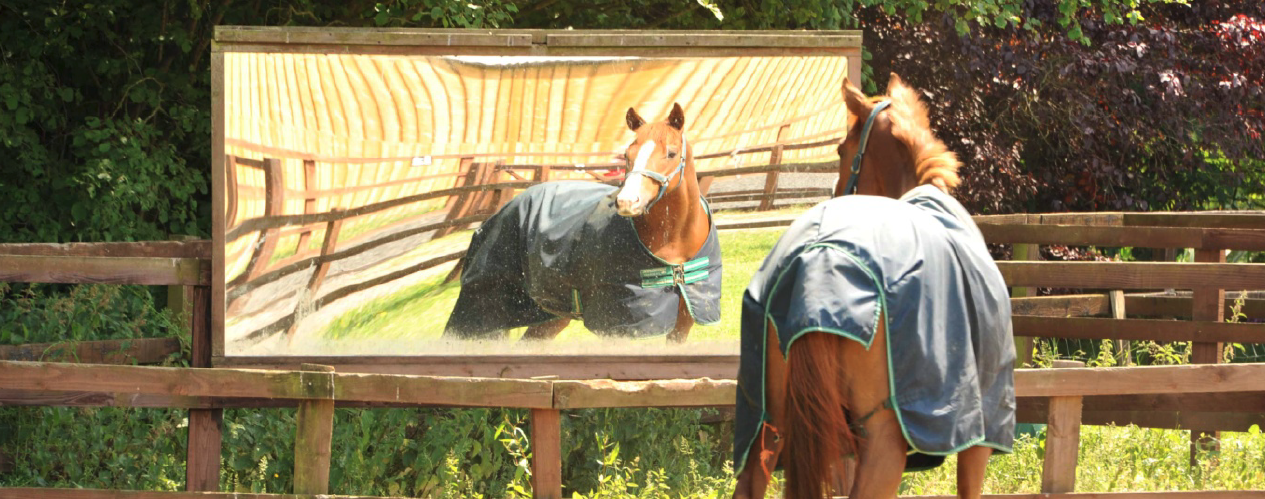Although often unavoidable, it is not natural for horses to be kept in an enclosed space away
from their companions. Some horses are more anxious in the stable than others and it is
recognised that most stable vices are a response to management problems.
Cribbing and wind-sucking seem to relate, at least in part, to a diet of concentrates, while
weaving, box-walking and head-nodding occur when the horse is frustrated. It is estimated
that around 20,000 horses in the UK weave and 10,000 box-walk. It is still not known how
many suffer from other forms of separation distress.
Researchers at the University of Lincoln have been investigating ways of improving the housing of horses for several years. Most recently the University undertook a year-long research project into whether mirrors can help reduce separation anxiety. The research has proven that, when used appropriately, many horses can benefit enormously from this simple intervention.


